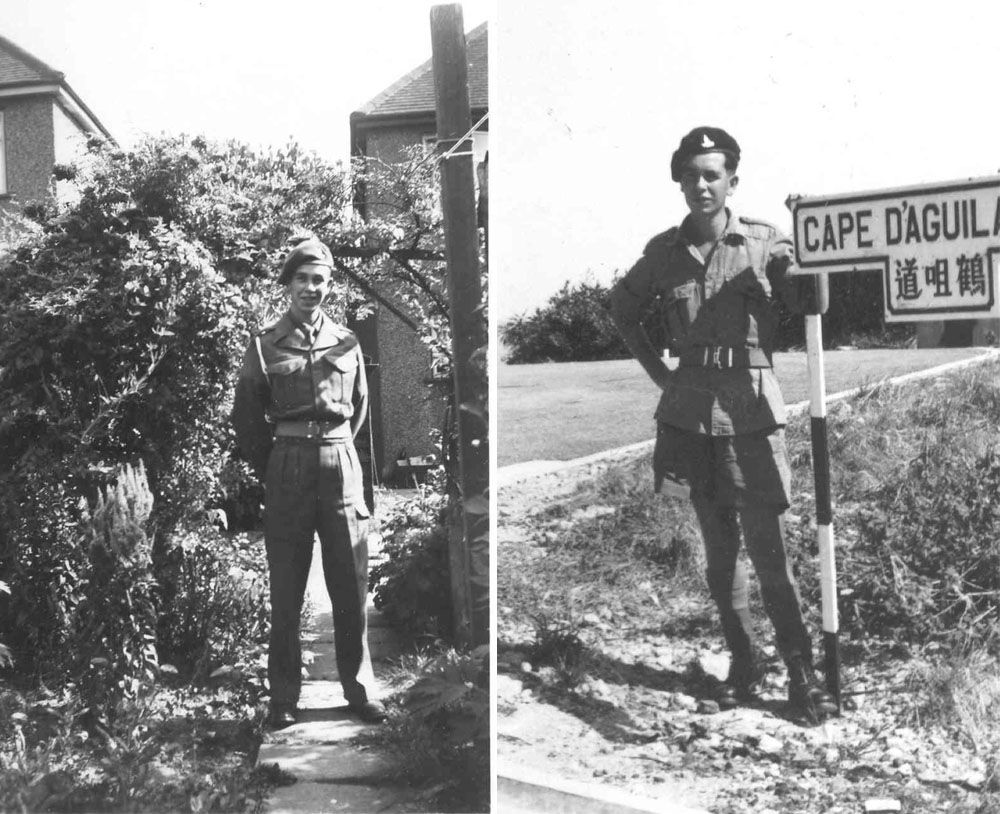In thinking about the personal account of my National Service , and how to tell that story in way that might interest readers, I wanted to find a way to present it beyond retelling a linear path over time. All stories have a beginning, middle and end, but a story can bore the reader or compel them to move on to the next section in eager anticipation. While I am not suggesting, my contribution reads like the latest novel that is a top seller, I wanted to specifically share a device that I think helps my tale. Before telling you about it, I would like to show it to you.
These two pictures helped me think about how I wanted to tell my story. Simply looking at them drove home to me how I had changed in the two years of my National Service, in the Royal Artillery. In this image where the before photograph and the after photograph are part of the same image next to each other, I cannot escape the sense of youth and expectancy in the beginning, nor can I fail to see the confident young man I had become two years later.
It struck me that these pictures could serve literal bookends to my story. These pictures feature in my Foreword and my End. My job became not to relate in some hum drum fashion everything that happened between over a period of time as if I was cataloging stationery, but to come to grips with how I changed and why and try to explain that within the context of my National Service. I would like to think that I have been successful, but of course others will be the judge of that, just like reviewers provide an opinion on a book or film.
But regardless of whether you think I have been successful or not, I would counsel developing your own device to tell your story if you are considering a personal memoir, particularly one about National Service.


Recent Comments